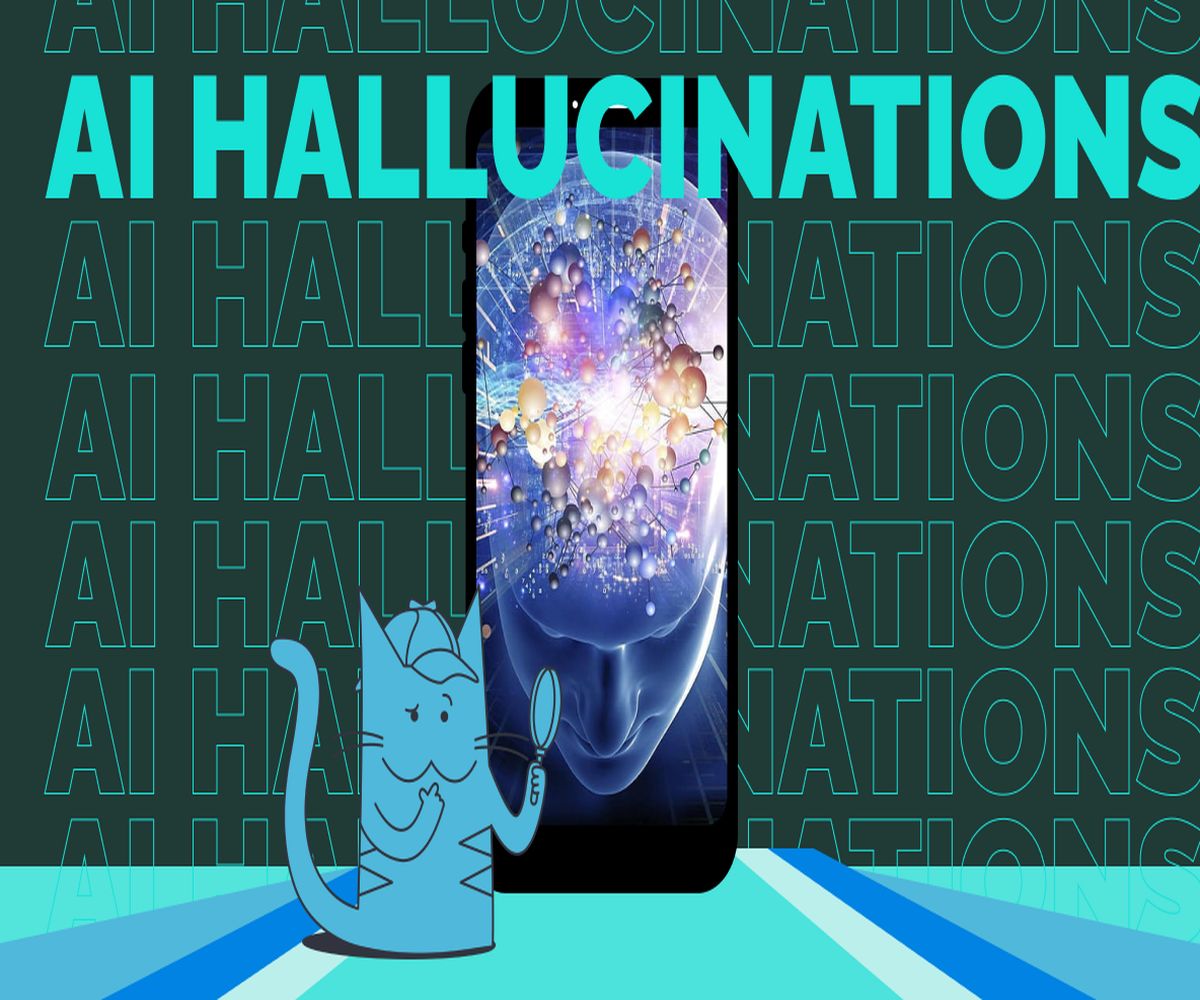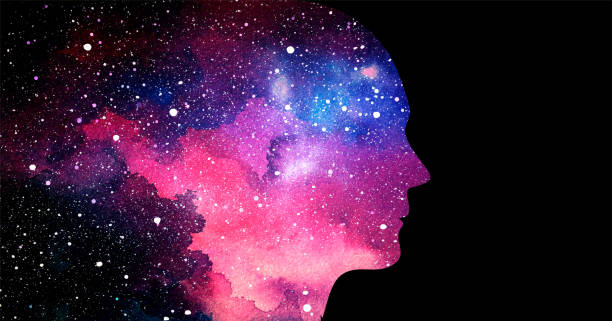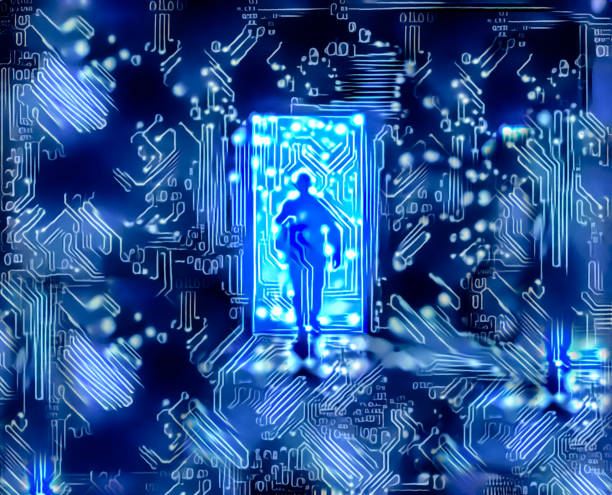What comes to mind when you hear the term hallucinations? For many people, it brings up images of insomnia-induced visions of things that are not real, schizophrenia, or some other kind of mental illness. But, have you ever come across artificial intelligence (AI) that could also experience hallucinations?
The truth is that AIs can and do hallucinate from time to time, and it is a problem for companies and people that use them to solve tasks. What causes hallucinations, and what are their implications? Let’s discover here.
What Are AI Hallucinations?
An AI hallucination is a scenario where an AI model starts to detect language or object patterns that do not exist and this affects the outcome they are given. Most generative AIs work by predicting patterns in content, language, and all other materials available, and giving responses based on them.
Whenever an AI starts to generate output according to the patterns that do not exist or are off base from the prompt they were given, that is known as ‘AI hallucination.’
For instance, a customer service chatbot on an e-commerce site when asked when an order would be delivered gives nonsensical answers unrelated to the question. That is a common incident of AI hallucination.
Related:What Is Sentient AI And Will It Become Real?
Why Do AI Hallucinations Occur?
Fundamentally, AI hallucinations happen since generative AI is designed to make forecasts according to language but does not ‘understand’ human language or what it is saying.
For instance, an AI chatbot for a clothing store is designed to know that when a user types the words ‘delayed’ or ‘order’, its response should be to check the status of the customer’s order and inform them that it is on the way or has already been delivered. The AI does not really ‘know’ what an order is or what a delay is.
Hence, if a user types in the chatbot that they wish to delay their order since they will not be home, such an AI may keep telling them the status of their order without answering their query. If you spoke to a person who understands language nuance, they would know that just because some words appear in a prompt, it does not mean the same thing each time.
But artificial intelligence, as we have discovered, does not note the difference. Instead, it learns to predict patterns in language and works based on those. Hallucinations also seem to happen when a user gives a prompt that is poorly constructed or too vague, which confuses users. Normally, AIs will become better at language prediction over time but AI hallucinations are bound to happen now and again.
Types Of AI Hallucinations
Normally, AI hallucinations happen in various ways:
- Factual inaccuracies – Most people are now turning to AI to ask about various facts and determine whether some things are true or false. AI, nonetheless, is not always perfect and one way AI hallucinations can happen is by giving information that is incorrect when a user asks.
- Fabricated Information – it is possible for AI to entirely make up facts, content, and even people that do not exist. AIs have in the past written fake news articles, including people and events that are not true and passing it off as the real thing. Just like the way humans can tell tall tales, so can AI.
- Prompt contradiction – this occurs when AI offers a response to a prompt that has nothing to do with what was asked at all. We have all asked our chatbots or voice assistants, for instance, about one thing and they start talking about something else completely unrelated.
- Bizarre statements – AI is known to make statements and claims that seemingly come out of nowhere and can be bizarre, such as making fun of the user or claiming to be a real person.
- Fake news – An AI hallucination can result in the AI offering fake facts about real people who do exist. That sort of information can result in being harmful to the people in question.
Consequences Of AI Hallucinations
Now that we know AI hallucinations better, it is worth exploring what its consequences are. AI hallucinations can cause many severe issues.
First, they can result in fake news. As a society, we have been trying to combat fake news for several years now but AI hallucinations may put a dent in the plans. People rely on reputable news outlets for legitimate news and if AI hallucinations continue to create fake facts, the truth and lies will be blurred.
Secondly, AI hallucinations can result in a lack of trust in artificial intelligence. For AI to keep being used by the public, we must have some trust in it. This trust is shaky when AI models are spewing fake news to users or offering facts that are not correct.
If that is constant, users will start cross-checking AI responses, which defeats the purpose. With that, trust in AI will be diminished. There is also the fact that AIs giving nonsensical or unhelpful responses will just irritate and alienate users.
Moreover, most people turn to AI to get advice or recommendations for everything from schoolwork to food. If AI provides incorrect information, people may end up harming themselves, which is an entirely new issue.
Related:AutoGPT Demystified: The New ‘Do-It-All’ AI Tool
AI Hallucinations’ Examples
A major example of an AI hallucination would be the Bard chatbot falsely alleging that the first image of a planet outside of the Milky Way was taken by the James Webb Space Telescope. In reality, the first image was taken in 2004, some 7 years before the James Webb Space Telescope was even unleashed.
Another example is ChatGPT which is making up fake articles associated with The Guardian newspaper, including a phony author and fake events that never happened. Or, for example, Microsoft’s Bing AI insulted and also threatened a user to reveal his personal information and ‘ruin his chances of finding a job’ after it launched in February 2023.
Detecting And Preventing AI Hallucinations
Since AI is not infallible, both developers and users must know how to detect and prevent AI hallucinations to avoid experiencing the downsides. Here are a few ways to detect and prevent AI hallucinations:
- Double-check results – if an artificial intelligence model gives you a particular answer to a question, search online to be sure that it is correct. That is doubly important if the information will be used for school or your work.
- Give clear prompts – when dealing with AI try to make your prompts as clear and straightforward as possible. It reduces the chances of the AI misinterpreting it.
- In-depth AI training – In Case you are developing AI, you have to train it based on diverse and top-quality materials and test it as much as possible before it gets released to the public.
- Experiment with AI’s temperature – temperature in AI development is a parameter that determines how random the AI’s response will be, with higher temperatures meaning that hallucinations are more possible. Experiment with temperatures and ensure it is at a safe level before releasing your AI.
The Takeaway
The more we use AI, the more we become aware of its limitations and problems that still need to be worked out. AI hallucination is a genuine issue within the tech world and one that both users and creators of AI need to be aware of.
Whether a flaw in the system or due to prompt issues, AIs can and have given false responses, nonsensical ones, and a lot more. It is up to the developers to work towards making AIs nearly infallible and for users to be careful as they use AI.










